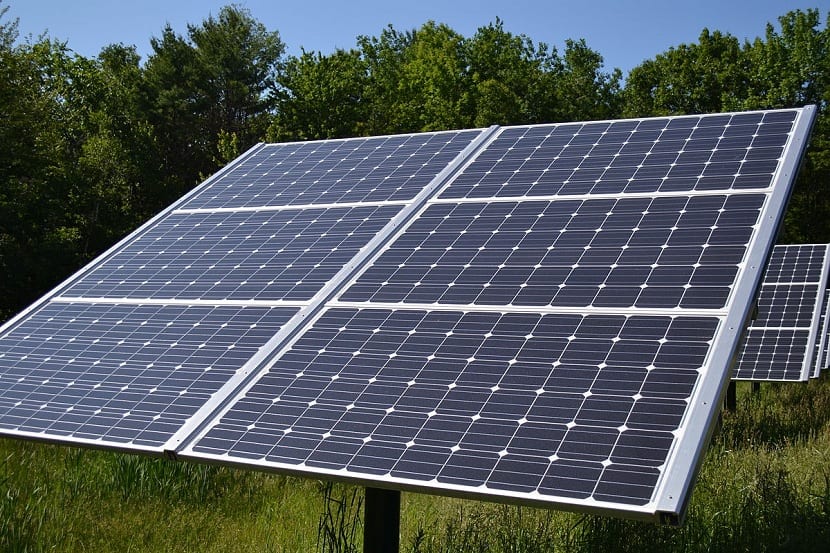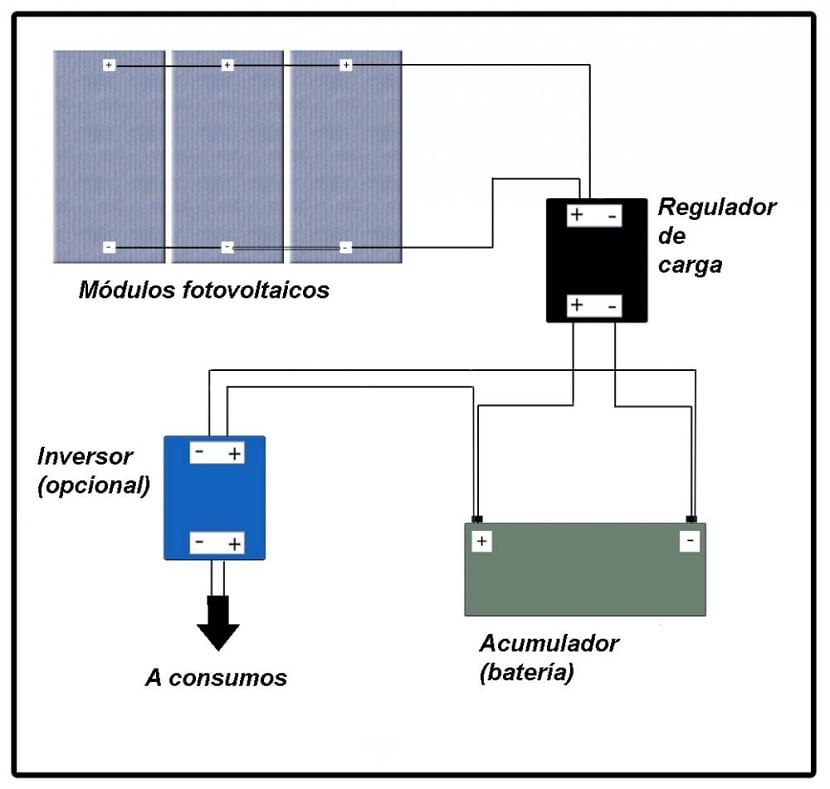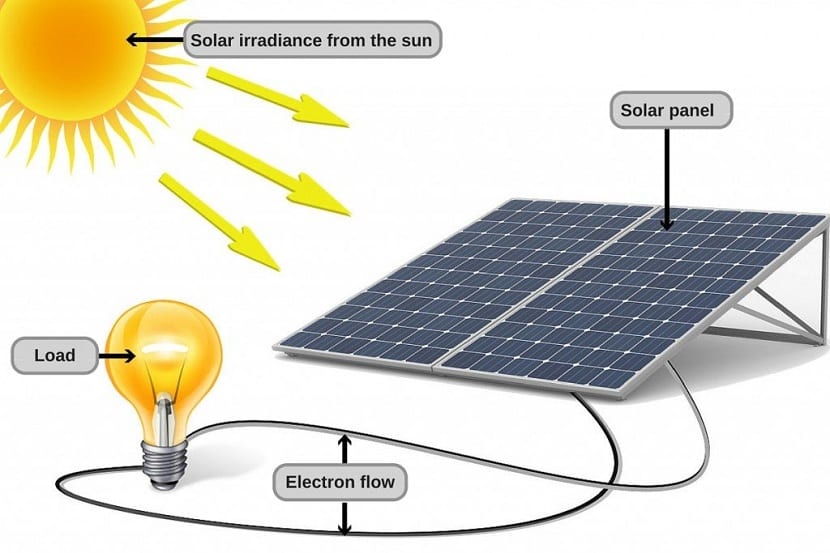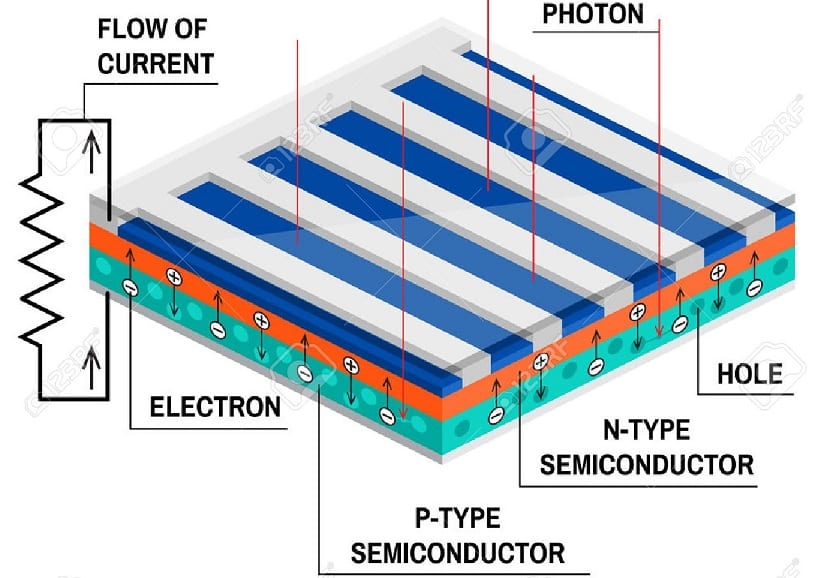
One of the most important processes in the world of solar energy is photovoltaic effect. It is a photoelectric effect in which an electric current is produced that travels from one piece to another made of different materials. These materials are exposed to sunlight or electromagnetic radiation. This effect is fundamental in the generation of electrical energy from the photovoltaic cells of the solar panels.
If you want to know how solar panels work and what the photovoltaic effect is, this is your post 🙂
What is the photovoltaic effect?
When we use a solar panel to obtain electrical energy, what we are taking advantage of is the energy that the solar radiation particles have to transform it into useful electrical energy for our home. Photovoltaic cells are semiconductor devices composed mainly of silicon. These photovoltaic cells have some impurities from other chemical elements. However, the silicon is tried to be as fucking as possible.
Photovoltaic cells are capable of generating electricity from a direct current using energy from solar radiation. The problem with this type of stream is that it is not used for the home. Continuous energy needs to be transformed into alternate energy in order to use it. This requires a power inverter.
What the photovoltaic effect does is produce that electrical energy from solar radiation. This radiation comes in the form of heat and thanks to this effect it is transformed into electricity. For this to happen, the photovoltaic cells must be placed in series along the solar panels. This is done so that you can get an adequate voltage that allows to generate electricity.
Obviously, not all solar radiation that comes from the atmosphere is transformed into electrical energy. Part of it is lost by reflection and another by transmission. That is, one part is returned to the atmosphere and the other part is passed through by the cell. The amount of radiation that is capable of contacting photovoltaic cells is what makes electrons jump from one layer to the other. It is then when an electric current is created whose power is proportional to the amount of radiation that finally hits the cells.
Characteristics of the photovoltaic effect

This is the mystery that solar panels keep. Surely you have ever stopped to think how they can generate an electric current from the sun. Well, it is about the participation of numerous materials composed of conductive elements. One of them is silicon. It is an element that shows a different behavior in reaction to the action of electricity.
The reaction that these semiconductor materials have depends entirely on whether the energy source is capable of exciting them or not. That is, the electrons go to another more energetic state. In this case, we have the source that is capable of exciting these electrons, which is solar radiation.
The moment a photon collides with an electron from the last orbit of a silicon atom, the photovoltaic effect begins. This collision causes the electron to receive energy from the photon and can become excited. If the energy that the electron acquires from the photon is higher than that of the attractive force of the nucleus of the silicon atom, we will be facing an exit of the electron from the orbit.
All this makes the atoms free and can travel through all the semiconductor material. When this happens, the silicon that serves as conduction diverts all the energy where it can be useful. The electrons that have been released from the charges go to other atoms where there are free spaces. The movement of these electrons is what is called charge current.
How it is produced

The charging currents are achieved by using the conductive materials and making this happen in a constant way so that there can be an electric field that has a constant polarity. It is this type of electric field that begins to push the electrons in all directions to circulate the electric current.
If the energy of the electron fed by the photon exceeds the attraction of the nucleus of the silicon atom, it will be free. For this to happen, the force that the impact of the photon must have on the electron is at least 1,2 eV.
Each type of semiconductor material has a minimum energy necessary for it to release electrons from its atoms. There are photons that have a shorter wavelength and come from ultraviolet radiation. As we know, these photons have a large amount of contained energy. On the other hand, we find those whose wavelength is longer, so they have less energy. These photons are in the infrared part of the electromagnetic spectrum.
The minimum energy required by each semiconductor material to release electrons depends on the frequency band. This band associates them from those that come in ultraviolet radiation to visible colors. Below that, they are unable to release electrons, so there will be no electrical current.
Photon problem

Going through the material to separate the electrons is somewhat more complicated. Not all photons do it directly. This is because in order to pass through the material they have to lose energy. If those in the longest wavelength region of the electromagnetic spectrum already had little energy, they end up losing it during contact with the material. When energy is lost, some photons collide slightly with electrons and cannot deflect them. These losses are inevitable and are what make it impossible to have 100% of the solar use.
Other energy losses occur when photons pass through all of the material and they do not collide with any electron to displace it. This is also an unavoidable problem.
I hope this article has clarified the photovoltaic effect.
